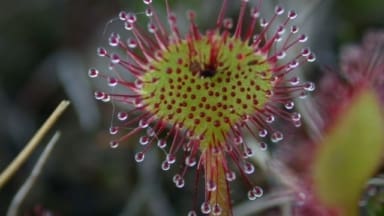
Insect-eating plants are among the 17,500 species which have been reintroduced to the Lancashire nature reserve, including the carnivorous greater sundew and oblong-leaved sundew, along with bog asphodel and white beak sedge.
Lancashire Wildlife Trust has returned the plants to Winmarleigh Moss, as it works to restore the Garstang peat bog after years of peat extraction. The trust said bringing these lost plants back is vital to support the varied biodiversity of this rare fragment of lowland peatland.
There are carnivorous plants native to the UK, of which Winmarleigh Moss boasts 11 inhabiting the precious peatlands. However, due to habitat destruction, many of these rarities are now missing from the lands where they once thrived.
The process of reintroducing lost species is not ‘as simple as just popping them into the ground’, explains the Trust. Unwanted scrub vegetation must be cleared first as it competes and hinders the growth of native peatland plants. Once cleared, specialist contractors and volunteers, set out the plants which are then planted (by hand) to keep disturbance of the bog to a minimum.

